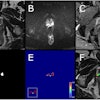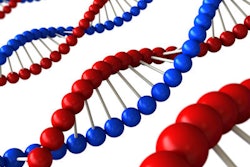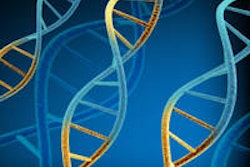High-risk breast cancer patients have an increased sensitivity to radiation -- and thus radiation-induced cancer -- so their mammography exams should be limited to a single oblique view, in addition to MRI to detect infiltrative breast cancer and carcinoma in situ, French researchers found.
BRCA1/2 carriers are known to have a higher risk of breast cancer, but these patients are also more susceptible to radiation-induced cancer because of how tumor suppressor genes react in radio-induced DNA damage, repair, and signaling. Heterozygous mutations of ATM, a major kinase initiating the response to radio-induced DNA double-strand breaks, is likely to be involved in lymphoma as well as in breast cancer in high-risk patients treated for Hodgkin's disease, according to Dr. Catherine Colin, PhD, from Hospices Civils de Lyon, Service de Radiologie, Centre Hospitalo-Universitaire Lyon in France.
"Thus, the standard two-view mammographic screening annually recommended with MRI in high-risk patients must be adapted," she said during a recent presentation at ECR 2013.
Currently, high-risk patients are screened with both MRI and mammography, usually starting at age 40. Mammography screening involves a low x-ray dose, with the mean glandular dose per view estimated to be 2 mGy -- although mean glandular dose could increase with different parameters, such as breast density, breast volume, or lack of breast compression, the researchers acknowledged.
So with two-view mammography, the mean glandular dose adds up to 4 mGy per mammogram; the cumulative dose for 10 years of screening would be about 40 mGy.
Colin and colleagues analyzed recent literature and included 11 high-risk patients and 19 low-risk patients in their study. Individual radiosensitivity was assessed by radiobiological effects and epidemiological studies. Radiophysical and radiological mammographic data about calcifications detection and reduction of exposures also were taken into account.
Radiation-induced DNA damage in breast epithelial cells were demonstrated ex vivo with doses that were low and repeated, reflecting an increase of unrepaired double-strand breaks after two-view mammography, the researchers found. DNA damage is most critical because it could leave genomic instability in the patient. In fact, when unrepaired, DNA damage may cause cellular death and radiosensitivity, and, when misrepaired, DNA damage could lead to chromosomal instability and an increased risk of cancer.
Lack of repair can occur at doses as low as 1 mGy, and DNA remained unrepaired 72 hours later. This is a "major topic of public health," Colin wrote in an email to AuntMinnieEurope.com.
Epidemiological data and radiobiology indicators suggest high-risk patients are more susceptible to radiation-induced cancer because of DNA damage, so it is an "absolute necessity" that only one view is used in mammography screening for these patients, Colin continued in her presentation. This paves the way for a more personalized screening program.
To make up for the fact that this protocol would involve fewer mammography views, Colin advocates the use of MRI, especially to detect early invasive breast cancer and also calcifications revealing ductal carcinoma in situ, perhaps even as a first-choice modality.



















